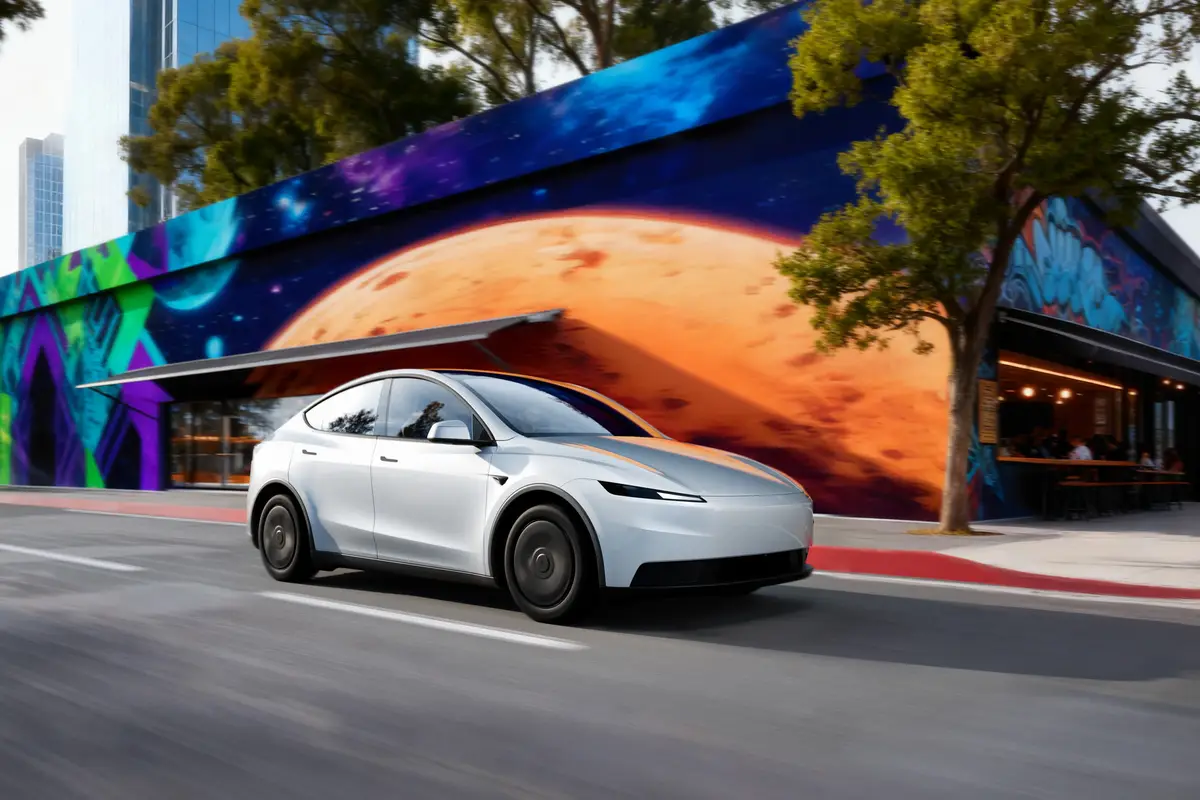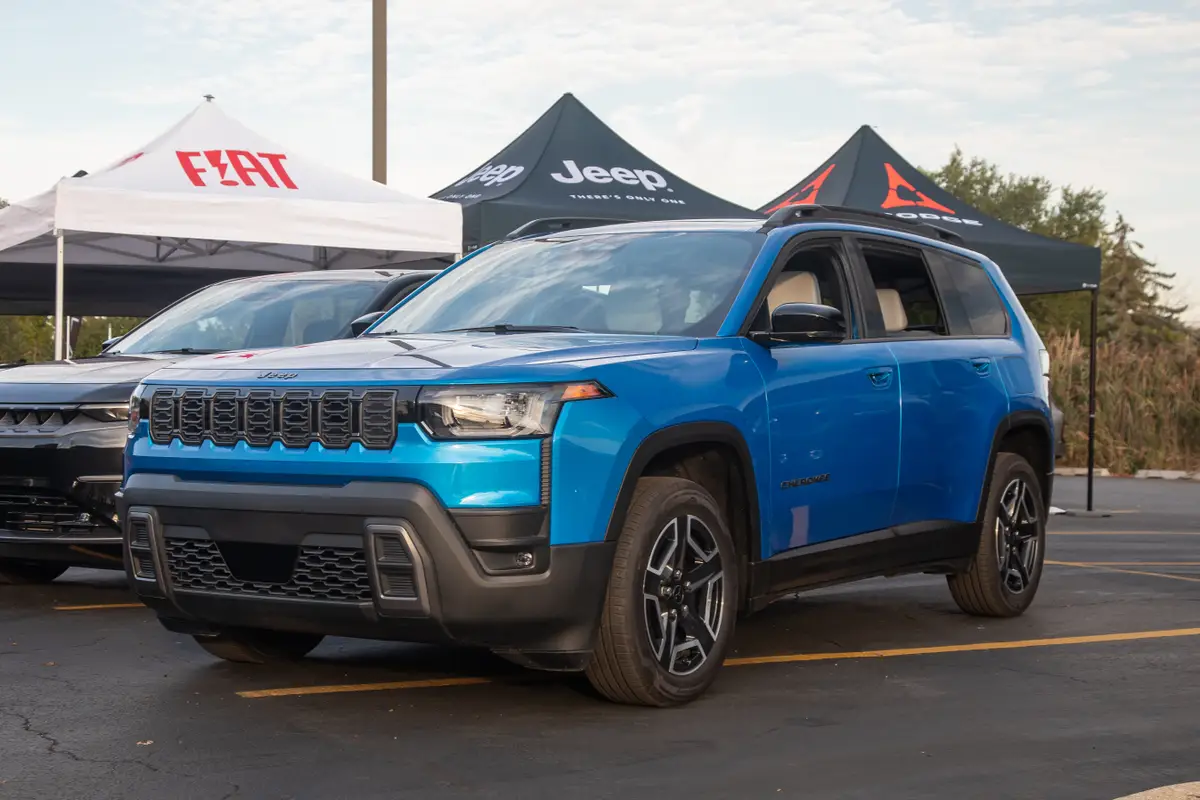2002 Ford Mustang: What's New
Vehicle Overview
Ford launched what became known as the pony-car phenomenon 37 years ago, with its 1964.5 Mustang which was introduced during the 1964 model year. Since then, the sporty compact coupe and convertible have gone through a series of generations and were most recently redesigned in 1999.
Mustangs still come in base or GT form, as a coupe or convertible, and with a variety of equipment changes for 2002. New Mustang audio options include an MP3 CD player and a Mach 1000 sound system. An updated Sport Appearance Group is available for V-6 models, which now roll on 16-inch tires. Bright aluminum wheels on the V-6-equipped models feature exposed lugs. Coupes have a new overhead storage net on the headliner, and new four-way head restraints are installed. Nudo leather seating surfaces are newly available.
A high-performance SVT Mustang Cobra with a 320-horsepower V-8 engine returned to the lineup during 2001 but did not continue into 2002. A redesigned SVT Mustang Cobra introduced at the 2002 Chicago Auto Show will debut as a 2003 model with an even hotter powertrain.
During the 2001 model year, a Mustang Bullitt special edition debuted, harking back to the 1960s and the Mustang driven by actor Steve McQueen in what many enthusiasts consider the best car-chase movie ever: Bullitt. Although the Bullitt model did not continue into the 2002 season, several of its features have gone into the V-6-equipped Mustang. They include molded side scoops and a reverse air-intake hood similar to the Cobras.
After the 2002 model year, General Motors will drop its Chevrolet Camaro and Pontiac Firebird muscle cars, which have long rivaled the Mustang. Ford isnt about to tamper with its still-popular Mustang not with 169,198 units sold during 2001, even though thats a slight drop from the previous year, according to Automotive News. Mustang convertibles also compete against the front-wheel-drive Chrysler Sebring convertible.
Exterior
Even in a tamer trim level with a V-6 engine, the Mustang flaunts a sporty appearance that is focused on its long-hood/short-deck profile. Several of the current styling cues are evolutions of the Mustangs appearance from more than three decades ago, including the hood scoop, side scoop and a grille that contains a pony emblem in a chrome corral. Vertical taillights resemble a tri-bar style, and the single-wing spoiler on the back of the GT model enhances its performance image. Convertibles have a glass back window and a power-operated top that stows beneath a hard boot.
Measuring 183.2 inches stem to stern, the Mustang is about a foot shorter than the Chevy Camaro. The Mustang rides a 101.3-inch wheelbase and is just over 53 inches high. The P225/55R16 tires on V-6 models measure 16 inches in diameter, while the Mustang GT gets 17-inch P245/45ZR17 tires on aluminum-alloy wheels. Fog lights and a special suspension go on GT models.
Interior
The Mustang seats four occupants on front bucket seats and a split, folding rear seat. Realistically, the backseat is better suited for children than adults. Because the Mustang sits a few inches taller than the Camaro, seating is more upright and the car is easier to enter and exit. Like those on the Camaro and Firebird, the doors demand considerable room to the sides in order to open fully. Cargo volumes are a modest 10.9 cubic feet in the coupe and 7.7 cubic feet in the convertible.
A dual-cockpit dashboard shape is reminiscent of early Mustangs. Standard equipment includes air conditioning, remote keyless entry, intermittent wipers, a cassette/CD stereo system, tachometer, tilt steering wheel, rear defogger, theft-deterrent system, and power windows, door locks and mirrors.
Convertibles add a six-way power drivers seat, lighted visor mirrors and cruise control, and substitute fixed rear seatbacks for the coupes split, folding backseat. The GT coupe includes a leather-wrapped steering wheel.
Under the Hood
The base-model Mustang carries a 3.8-liter V-6 engine that produces 193 hp, while the GT gets a 4.6-liter single-overhead-cam V-8 rated at 260 hp. Either engine can team with a five-speed-manual transmission or an optional four-speed automatic. A Traction-Lok limited-slip rear axle is standard on GT models.
Safety
All-disc antilock brakes are standard on the Mustang GT and optional on the base model. Side-impact airbags are not available.
Driving Impressions
Whether its packing a V-6 or V-8 engine, the Mustang is a strong performer. The V-8 engine comes across as vigorously enthusiastic. That said, the Mustangs acceleration with either engine cant match that of GMs comparable twin pony cars, the Chevrolet Camaro and Pontiac Firebird.
Taken as a whole, the Mustang is more civilized than its GM competitors and is easier to live with for everyday driving, largely because of its relatively smooth ride and quiet operation. The Mustangs interior is also more accommodating as a result of its taller stance, which also eases entry and exit.
Handling is another bonus, especially when driving a GT model. Steering demands moderate effort, but you get a firm and secure response on all pavement surfaces. The GT also maintains its grip tenaciously, through swift curves. The seats are firm but sufficiently cushioned for comfort.
The GTs V-8 engine delivers a lushly satisfying exhaust sound, but Mustangs are otherwise pretty quiet. Fords five-speed-manual gearbox isnt always the easiest to shift, and some of these manuals have proved to be clanky and notchy.
| Reported by Jim Flammang for cars.com From the cars.com 2002 Buying Guide |
Featured stories



